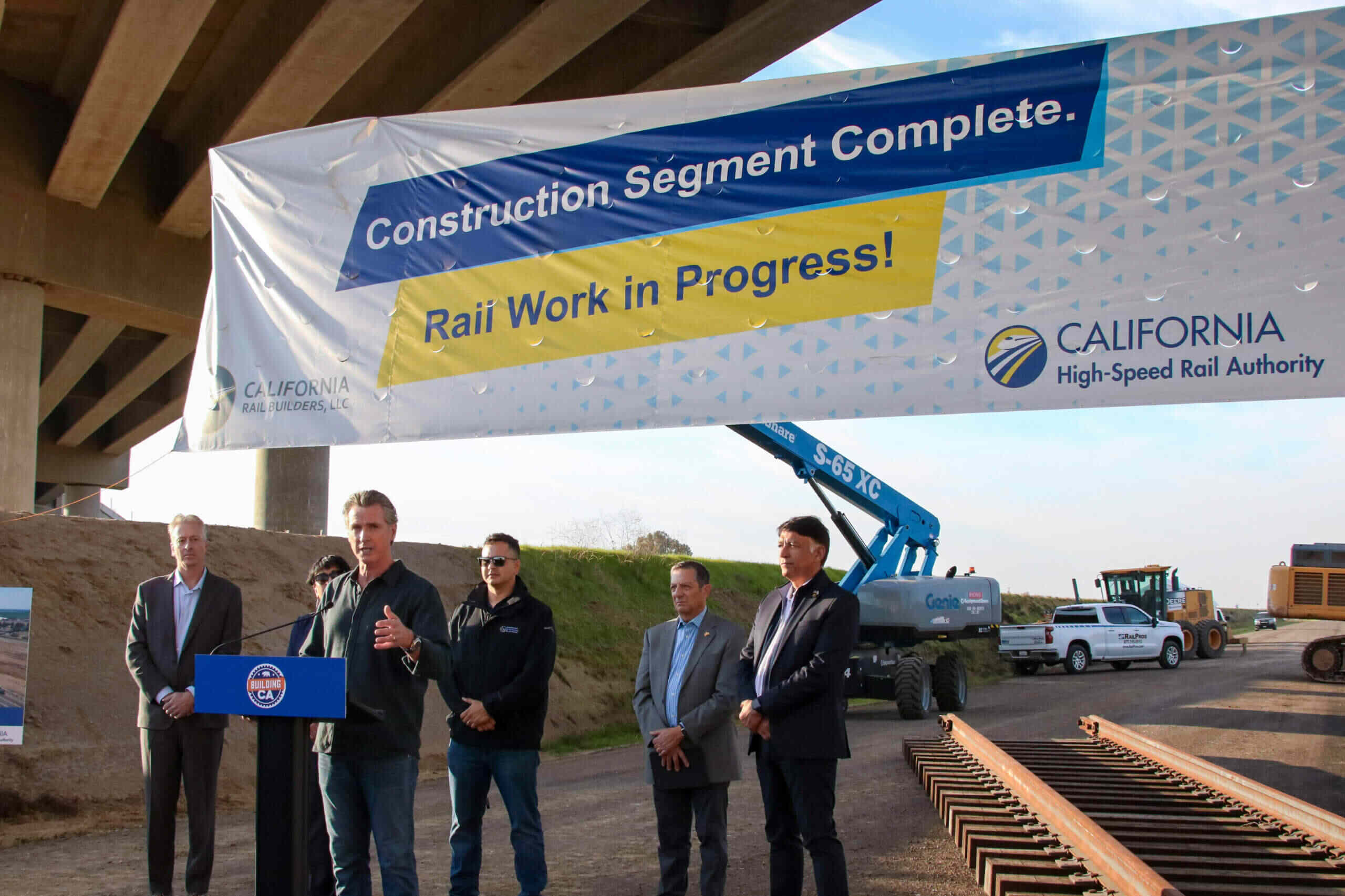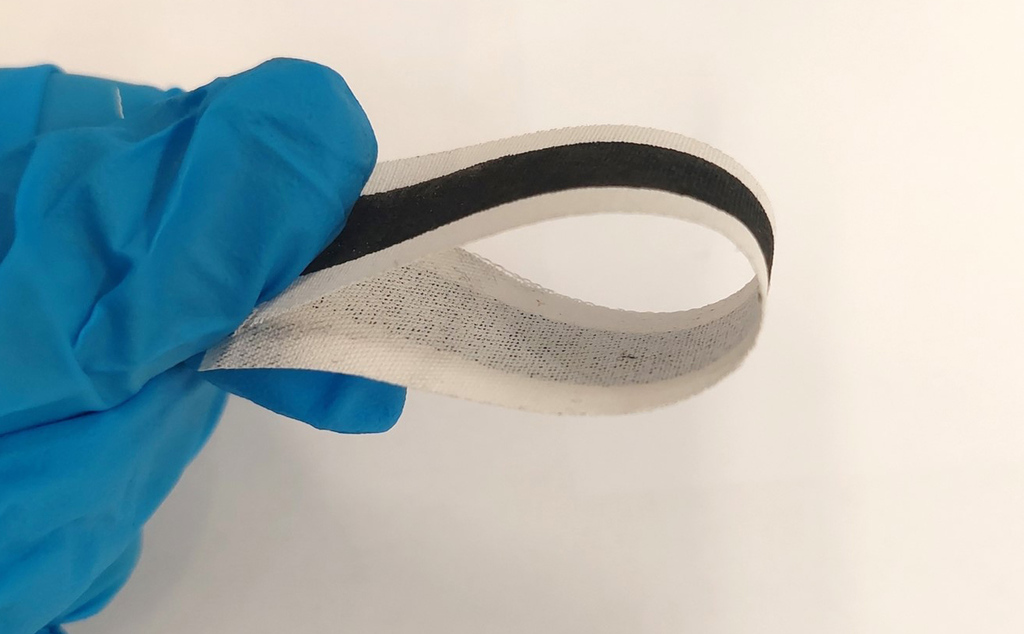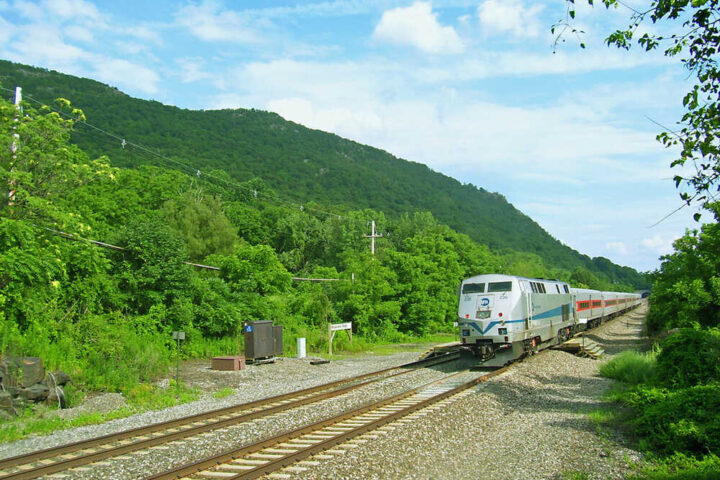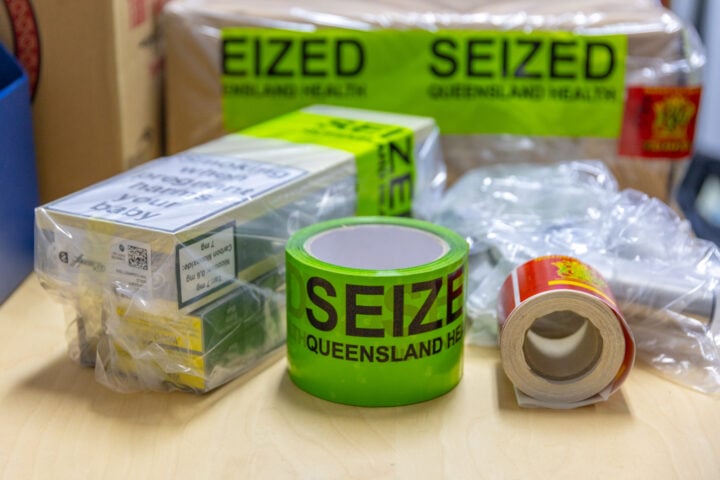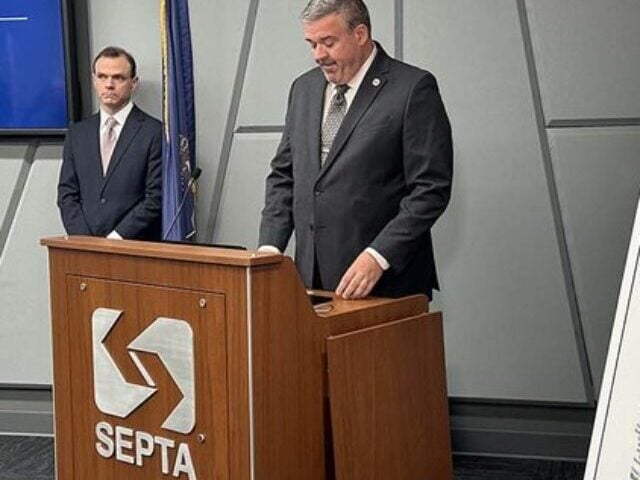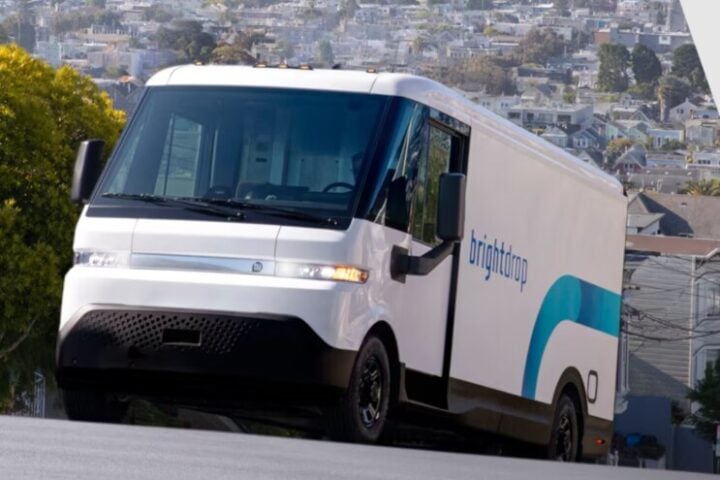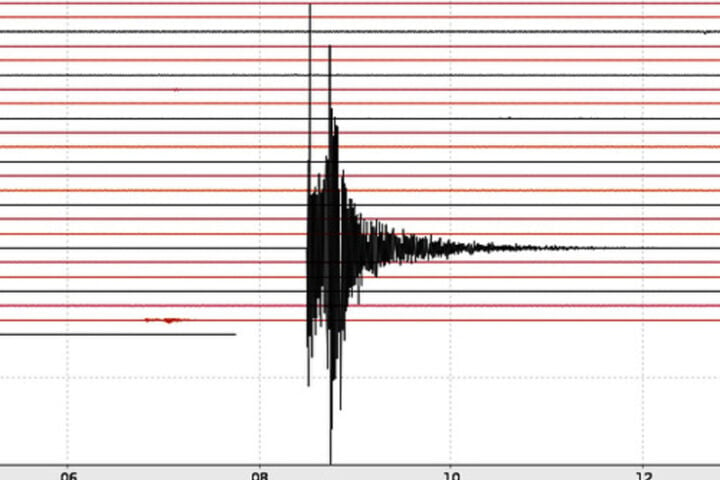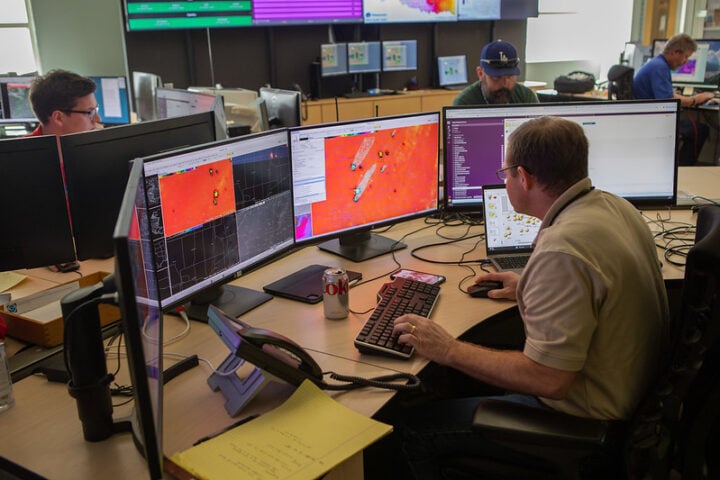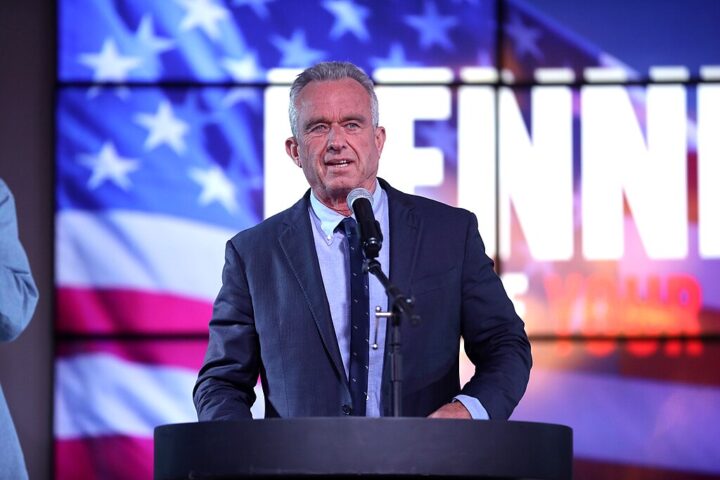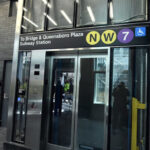Governor Gavin Newsom unveiled California’s State Rail Plan on January 7, 2025, a $310 billion initiative to create a zero-emission rail network connecting the state’s regions by 2050. The plan emerged alongside the start of track-laying for the high-speed rail in Kern County, advancing California’s largest transit infrastructure project.
The technical specifications reveal the plan’s scope: increasing rail and transit usage from 2% to 20% of total miles traveled, translating to 200 million daily passenger miles shifting from highways to railways. Each high-speed train will replace 612 passenger vehicles on California’s congested corridors, according to the official planning documents.
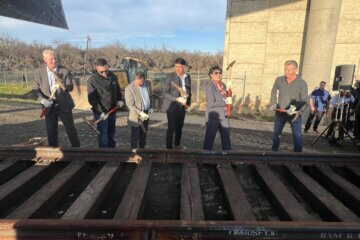
“California is building a clean transportation system for the future,” Newsom stated at the track-laying ceremony. “By 2050, every Californian should be able to choose rail as a way to get to their destination, near or far. Our rail plan is ambitious, but as the world’s fifth largest economy bursting with talent and innovation, we’re ready to take on this challenge.”
The integrated network combines intercity, regional, and local transit systems with electrified high-speed rail as its core. California High-Speed Rail Authority CEO Ian Choudri detailed the connectivity: “As a foundational part of the state’s integrated rail network, California’s clean, electrified high-speed rail project will connect the Bay Area to Los Angeles through the Central Valley, extending to local and regional networks throughout the state.”
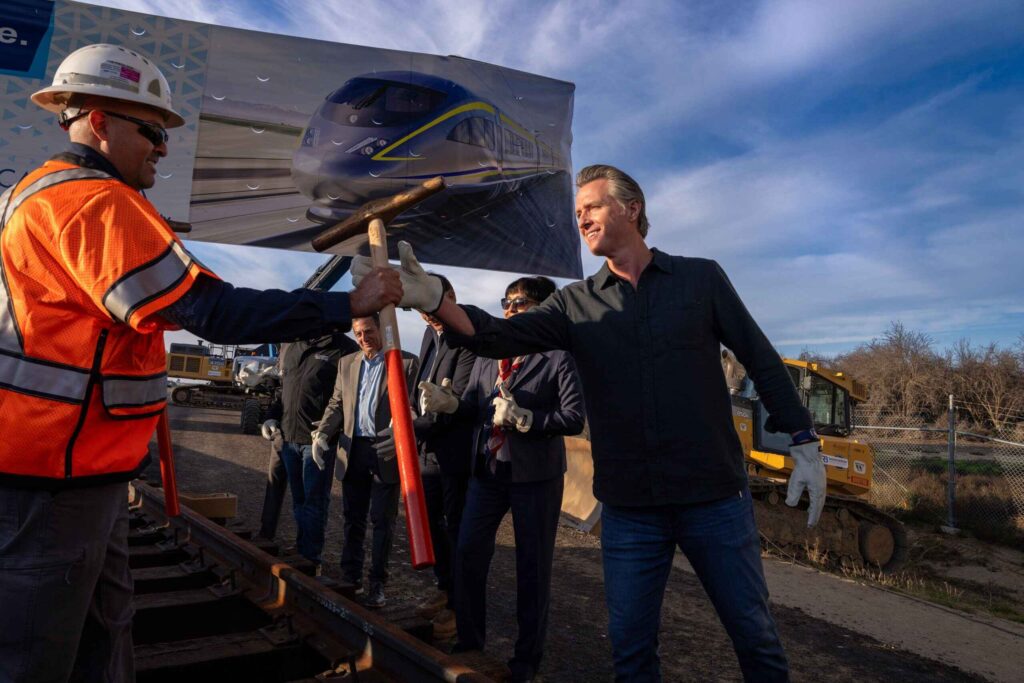
Technical milestones include North America’s first self-powered, zero-emission passenger train’s arrival in San Bernardino County in June 2024. Caltrain implemented California’s first electric rail system on the San Francisco Peninsula in August 2024, followed by full electric service activation on the San Francisco-San Jose corridor in September.
The engineering specifications address climate resilience through infrastructure hardening against sea-level rise, wildfires, and flooding. Transportation Secretary Toks Omishakin explained the technical approach: “This plan pushes beyond the status quo, improving multimodal options, clean air and equitable access to jobs and other opportunities―all vital components of a thriving community.”
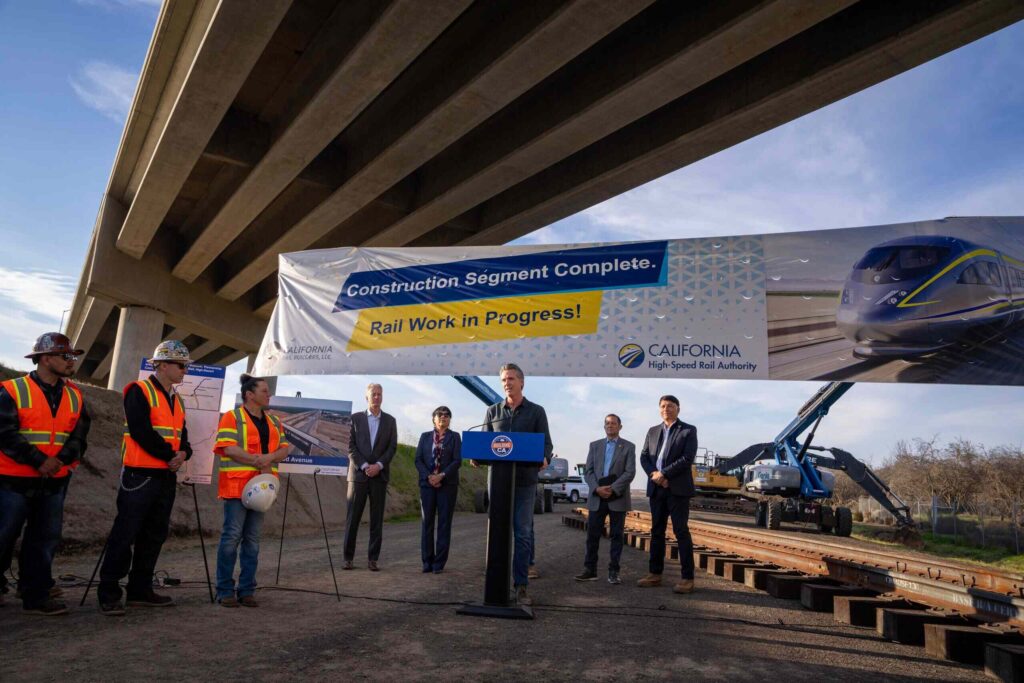
The $310 billion investment structure draws from local, state, federal, and private funding sources, projecting $540 billion in economic returns by 2050. The construction and operations program will generate 900,000 full-time positions across engineering, maintenance, and operational sectors.
Southern California’s transit engineering includes the Del Mar Bluff track stabilization and relocation project, LOSSAN corridor realignment in San Clemente to counter coastal erosion, and integration with Brightline West’s high-speed connection to Las Vegas. The Pacific Surfliner service between San Diego and Los Angeles will advance to 30-minute headways by 2050.
Phase 2 engineering extends high-speed rail from San Diego to LA’s Union Station through Escondido, Murrieta, and San Bernardino by 2050. Regional service improvements specify 15-minute headways for the Sprinter (Oceanside-Escondido), 30-minute frequencies for Coaster and Metrolink operations, and plans for a cross-border trolley connection to Tijuana and its airport.
Similar Posts
Technical challenges include multi-agency coordination requirements, infrastructure protection measures for climate resilience, and sustained funding mechanisms across political cycles. The state currently seeks federal environmental approvals for stringent emissions standards affecting trains and trucks.
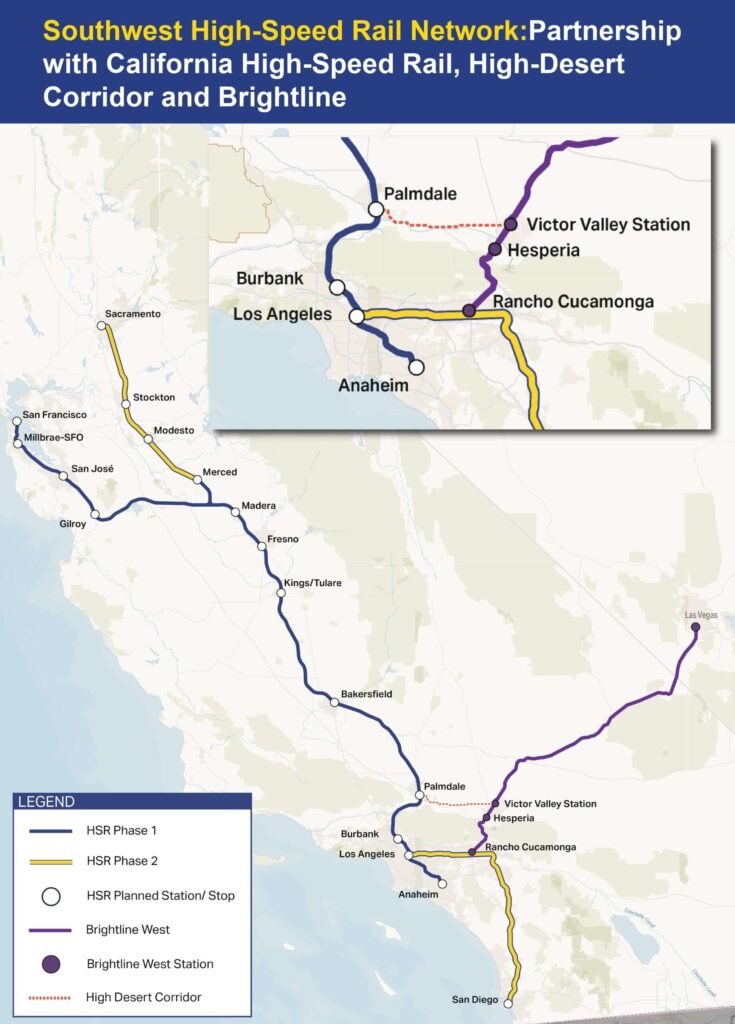
The plan faces practical hurdles: maintaining construction momentum over 25 years, ensuring consistent funding streams, and coordinating multiple transit agencies’ operations. The plan’s climate adaptation measures must address infrastructure protection while maintaining operational efficiency.
These transit developments occur as ridership patterns evolve post-COVID-19, with the State Rail Plan noting less focus on peak-hour commutes in favor of all-day, consistent service to attract and retain riders. The plan specifies transportation patterns requiring consistent service throughout the day.The success of this zero-emission transit network depends on implementing the stated infrastructure measures, sustained political support, and effective integration of multiple transit systems. As California proceeds with this comprehensive rail program, the execution of stated goals and integration requirements will determine the network’s development through 2050.
